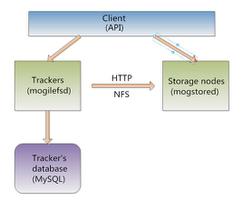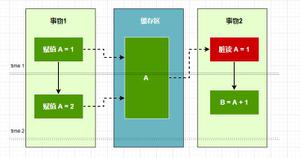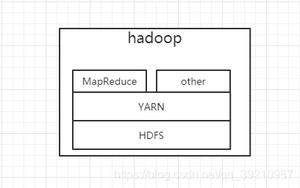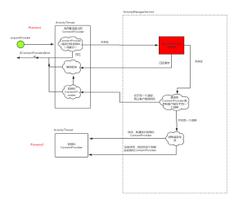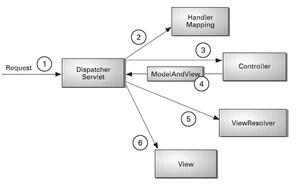Spring5源码分析BeanDefinition详解

public interface BeanDefinition extends AttributeAccessor, BeanMetadataElement { /**
* Scope identifier for the standard singleton scope: "singleton".
* <p>Note that extended bean factories might support further scopes.
* @see #setScope
*
* 单例
*/
String SCOPE_SINGLETON = ConfigurableBeanFactory.SCOPE_SINGLETON;
/**
* Scope identifier for the standard prototype scope: "prototype".
* <p>Note that extended bean factories might support further scopes.
* @see #setScope
*
* 多例
*/
String SCOPE_PROTOTYPE = ConfigurableBeanFactory.SCOPE_PROTOTYPE;
/**
* Role hint indicating that a {@code BeanDefinition} is a major part
* of the application. Typically corresponds to a user-defined bean.
*/
int ROLE_APPLICATION = 0;
/**
* Role hint indicating that a {@code BeanDefinition} is a supporting
* part of some larger configuration, typically an outer
* {@link org.springframework.beans.factory.parsing.ComponentDefinition}.
* {@code SUPPORT} beans are considered important enough to be aware
* of when looking more closely at a particular
* {@link org.springframework.beans.factory.parsing.ComponentDefinition},
* but not when looking at the overall configuration of an application.
*/
int ROLE_SUPPORT = 1;
/**
* Role hint indicating that a {@code BeanDefinition} is providing an
* entirely background role and has no relevance to the end-user. This hint is
* used when registering beans that are completely part of the internal workings
* of a {@link org.springframework.beans.factory.parsing.ComponentDefinition}.
*/
int ROLE_INFRASTRUCTURE = 2;
// Modifiable attributes
/**
* Set the name of the parent definition of this bean definition, if any.
*
* 期初理解是填的被集成类的名称,然而通过注解或者XML导入的方式都试过了,都没有设置这个值,
* 最后发现只有当通过XML(groovy没测试)导入的时候并且设置了<bean parent="parentName"></>才会真正设置parentName
* 这个值应该没什么用吧,找了一些也就是在MergeBeanDefinition的时候调用了getParentName,其他时候好像并没有
*/
void setParentName(@Nullable String parentName);
/**
* Return the name of the parent definition of this bean definition, if any.
*/
@Nullable
String getParentName();
/**
* Specify the bean class name of this bean definition.
* <p>The class name can be modified during bean factory post-processing,
* typically replacing the original class name with a parsed variant of it.
* @see #setParentName
* @see #setFactoryBeanName
* @see #setFactoryMethodName
*
* 当前Bean的类名称,全路径名。该名称可以在自定义的BeanFactoryPostProcessor中进行修改
* 如果你愿意设置可以强转beanFactory为BeanDefinitionRegistry之后remove掉这个BeanName的BD
*/
void setBeanClassName(@Nullable String beanClassName);
/**
* Return the current bean class name of this bean definition.
* <p>Note that this does not have to be the actual class name used at runtime, in
* case of a child definition overriding/inheriting the class name from its parent.
* Also, this may just be the class that a factory method is called on, or it may
* even be empty in case of a factory bean reference that a method is called on.
* Hence, do <i>not</i> consider this to be the definitive bean type at runtime but
* rather only use it for parsing purposes at the individual bean definition level.
* @see #getParentName()
* @see #getFactoryBeanName()
* @see #getFactoryMethodName()
*/
@Nullable
String getBeanClassName();
/**
* Override the target scope of this bean, specifying a new scope name.
* @see #SCOPE_SINGLETON
* @see #SCOPE_PROTOTYPE
*
* 设置单例还是原型(自己更愿意叫多例,实在不知道怎么去理解“原型” --!)
*/
void setScope(@Nullable String scope);
/**
* Return the name of the current target scope for this bean,
* or {@code null} if not known yet.
*/
@Nullable
String getScope();
/**
* Set whether this bean should be lazily initialized.
* <p>If {@code false}, the bean will get instantiated on startup by bean
* factories that perform eager initialization of singletons.
* 设置Bean是否“懒加载”,如果是false,默认也是false,则在启动Spring容器的时候beanFactory就会初始化它
*/
void setLazyInit(boolean lazyInit);
/**
* Return whether this bean should be lazily initialized, i.e. not
* eagerly instantiated on startup. Only applicable to a singleton bean.
*/
boolean isLazyInit();
/**
* Set the names of the beans that this bean depends on being initialized.
* The bean factory will guarantee that these beans get initialized first.
*
* 设置当前Bean要依赖于@DependsOn的这些Bean都实例化之后才能进行实例化
*/
void setDependsOn(@Nullable String... dependsOn);
/**
* Return the bean names that this bean depends on.
*/
@Nullable
String[] getDependsOn();
/**
* Set whether this bean is a candidate for getting autowired into some other bean.
* <p>Note that this flag is designed to only affect type-based autowiring.
* It does not affect explicit references by name, which will get resolved even
* if the specified bean is not marked as an autowire candidate. As a consequence,
* autowiring by name will nevertheless inject a bean if the name matches.
*
* 只有需要注入的Bean使用的by type注入,且autowireCandidate设置为true才会注入成功
* 测试一下自定义一个BeanFactoryPostProcessor把Dept的autowireCandidate设置为false,且使用by type注入是否成功
* --经过测试Dept的BeanDefinition的autowireCandidate=false确实会导致注入失败,有兴趣的可以试试
*
* @Component
* public class MyBeanFactoryPostProcessor implements BeanFactoryPostProcessor {
* @Override
* public void postProcessBeanFactory(ConfigurableListableBeanFactory beanFactory) throws BeansException {
* BeanDefinition dept = beanFactory.getBeanDefinition("dept");
* dept.setAutowireCandidate(false);
* }
* }
*
*/
void setAutowireCandidate(boolean autowireCandidate);
/**
* Return whether this bean is a candidate for getting autowired into some other bean.
*/
boolean isAutowireCandidate();
/**
* Set whether this bean is a primary autowire candidate.
* <p>If this value is {@code true} for exactly one bean among multiple
* matching candidates, it will serve as a tie-breaker.
*
* 设置当前的Bean是优先被注入的,比如同一个类型使用两个不同的beanName在Spring中存在两个对象,
* 那么被标记为primary=true的在根据by type注入的时候会优先被注入
*/
void setPrimary(boolean primary);
/**
* Return whether this bean is a primary autowire candidate.
*/
boolean isPrimary();
/**
* Specify the factory bean to use, if any.
* This the name of the bean to call the specified factory method on.
* @see #setFactoryMethodName
*
* 设置FactoryBean的名称 FactoryBean就是可以产生Spring Bean的Bean,通过beanName和&beanName分别得到Bean和FactoryBean实例
*/
void setFactoryBeanName(@Nullable String factoryBeanName);
/**
* Return the factory bean name, if any.
*/
@Nullable
String getFactoryBeanName();
/**
* Specify a factory method, if any. This method will be invoked with
* constructor arguments, or with no arguments if none are specified.
* The method will be invoked on the specified factory bean, if any,
* or otherwise as a static method on the local bean class.
* @see #setFactoryBeanName
* @see #setBeanClassName
*
* 设置FactoryBeanMethod
*/
void setFactoryMethodName(@Nullable String factoryMethodName);
/**
* Return a factory method, if any.
*/
@Nullable
String getFactoryMethodName();
/**
* Return the constructor argument values for this bean.
* <p>The returned instance can be modified during bean factory post-processing.
* @return the ConstructorArgumentValues object (never {@code null})
*
* 返回构造函数的参数,可以使用BeanFactoryPostProcessor修改参数
*/
ConstructorArgumentValues getConstructorArgumentValues();
/**
* Return if there are constructor argument values defined for this bean.
* @since 5.0.2
*/
default boolean hasConstructorArgumentValues() {
return !getConstructorArgumentValues().isEmpty();
}
/**
* Return the property values to be applied to a new instance of the bean.
* <p>The returned instance can be modified during bean factory post-processing.
* @return the MutablePropertyValues object (never {@code null})
* 返回Bean的属性对应的值,可以使用BeanFactoryPostProcessor修改这些值
*/
MutablePropertyValues getPropertyValues();
/**
* Return if there are property values values defined for this bean.
* @since 5.0.2
*/
default boolean hasPropertyValues() {
return !getPropertyValues().isEmpty();
}
/**
* Set the name of the initializer method.
* @since 5.1
*
* 当前Bean中添加一个初始化方法,再使用BeanFactoryPostProcessor设置它的BeanDefinition initMethodName
* Spring initMethod在BeanPostProcessor的postProcessBeforeInitialization之后,postProcessAfterInitialization之前被调用
*/
void setInitMethodName(@Nullable String initMethodName);
/**
* Return the name of the initializer method.
* @since 5.1
*/
@Nullable
String getInitMethodName();
/**
* Set the name of the destroy method.
* @since 5.1
*
* 设置Bean被销毁时要执行的方法,可以做一些清理工作
*/
void setDestroyMethodName(@Nullable String destroyMethodName);
/**
* Return the name of the destroy method.
* @since 5.1
*/
@Nullable
String getDestroyMethodName();
/**
* Set the role hint for this {@code BeanDefinition}. The role hint
* provides the frameworks as well as tools with an indication of
* the role and importance of a particular {@code BeanDefinition}.
* @since 5.1
* @see #ROLE_APPLICATION
* @see #ROLE_SUPPORT
* @see #ROLE_INFRASTRUCTURE
*/
void setRole(int role);
/**
* Get the role hint for this {@code BeanDefinition}. The role hint
* provides the frameworks as well as tools with an indication of
* the role and importance of a particular {@code BeanDefinition}.
* @see #ROLE_APPLICATION
* @see #ROLE_SUPPORT
* @see #ROLE_INFRASTRUCTURE
*/
int getRole();
/**
* Set a human-readable description of this bean definition.
* @since 5.1
*/
void setDescription(@Nullable String description);
/**
* Return a human-readable description of this bean definition.
*/
@Nullable
String getDescription();
// Read-only attributes
/**
* Return a resolvable type for this bean definition,
* based on the bean class or other specific metadata.
* <p>This is typically fully resolved on a runtime-merged bean definition
* but not necessarily on a configuration-time definition instance.
* @return the resolvable type (potentially {@link ResolvableType#NONE})
* @since 5.2
* @see ConfigurableBeanFactory#getMergedBeanDefinition
*/
ResolvableType getResolvableType();
/**
* Return whether this a <b>Singleton</b>, with a single, shared instance
* returned on all calls.
* @see #SCOPE_SINGLETON
* 返回Bean是否是单例
*/
boolean isSingleton();
/**
* Return whether this a <b>Prototype</b>, with an independent instance
* returned for each call.
* @since 3.0
* @see #SCOPE_PROTOTYPE
*
* 返回Bean是否是原型
*/
boolean isPrototype();
/**
* Return whether this bean is "abstract", that is, not meant to be instantiated.
*
* 返回对象是否是抽象的,以为着不会被实例化。。。这有什么用喃????
*/
boolean isAbstract();
/**
* Return a description of the resource that this bean definition
* came from (for the purpose of showing context in case of errors).
*/
@Nullable
String getResourceDescription();
/**
* Return the originating BeanDefinition, or {@code null} if none.
* Allows for retrieving the decorated bean definition, if any.
* <p>Note that this method returns the immediate originator. Iterate through the
* originator chain to find the original BeanDefinition as defined by the user.
*/
@Nullable
BeanDefinition getOriginatingBeanDefinition();
}
BeanDefinition是Spring描述一个Bean的包装类,Spring后面的操作都依赖于解析对应Bean的属性做出相应的动作执行,完成我们所感受到的功能
比如Bean是否单例,是否延迟加载,是否是Primary Bean,是否有DependsOn的条件,是否允许被用于自动注入,是否有INIT方法等等,Spring解析到这些内容都会做出对应的响应。
以上是 Spring5源码分析BeanDefinition详解 的全部内容, 来源链接: utcz.com/z/510552.html


